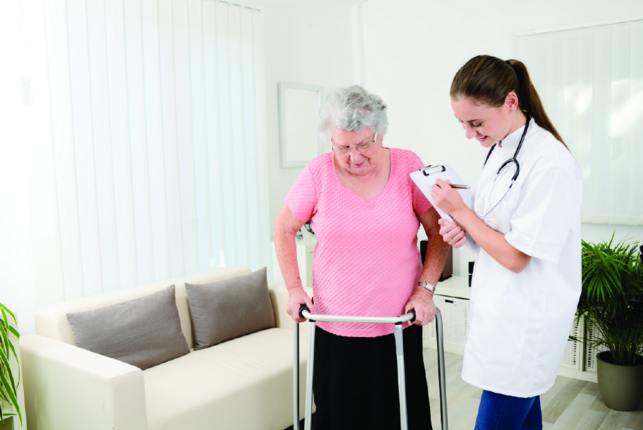
by Kim Kilday, MBA, MHA, VP of Sales and Marketing, Liberty Healthcare Group
Once a Patient returns to the community after a skilled nursing rehabilitation experience, the practical work begins. A Patient gets excited – and becomes an excellent salesperson – on the topic of returning home and to a normal routine.
This excitement may overshadow underlying medical needs, the ability – physical or mental – of the caregiver, or initiate an acceleration of exercises that could trigger over-doing things. Being up front about the possible limitations or roadblocks to returning home is a key topic to discuss with the Attending Physician and Care Manager. For example, if a Patient has primary duties to babysit for their Grandchild and the patient has undergone a hip resection, babysitting duties need to be reassigned. This reassignment of babysitting duties may default to the Patient’s primary Caregiver leading to a negative outcome if there is a return home without any services in place. While this may not change a discharge date, it helps to talk through what the Caregiver may need to do in preparation for the Patient to return home.
A normal routine, however, can be daunting when a Patient has been engaged in treatment for twenty-four hours a day, seven days a week. A typical hospital average length of stay is anywhere from 2 – 4.5 days and an average SNF length of stay is around 10 – 22 days. The time someone is engaged in treatment is designed to support the Patient with their recovery process and to establish coping skills they may use to remain as independent as possible upon returning home.
It is easy to become caught up in the excitement a patient feels about returning home and the provider is only as good as the responses to their questions about the availability of community support and the confidence level of the Patient and Caregiver about their coping skills. This is truly a measure of the discharge plan and ensuring there are supports and services that wrap around the Patient.
Here are some questions a Caregiver can mentally check off so they do not become the “Debbie Downer” as the transition to home grows near.
- Collaborating on a realistic discharge date with the clinical team at the skilled rehabilitation facility
– is the Patient ready to go home?
– would spending a few more days support a better outcome at home?
- Does the Patient condition support medical home care or is personal care services a better option.
- If a Caregiver needs to return back to their “normal” life, are there individuals available to look in on the Patient. These could be a neighbor, another family member, home care or personal care attendants.
Medical home care offers peace of mind by making visits based on the physician order for services. The basic services provided in the home include Nursing and Therapy and become detailed based on the Physician orders and the initial evaluation by the Clinical Team. The more specific possibilities could range from continuing therapy for strength and endurance, wound management, support-ing a proper medication regimen, intravenous medication administration or lab values. The best success occurs when a caregiver is involved for the Nurse or Therapist to provide teaching.
What to anticipate from a home care visit is often asked. As a standard, the Nurse or Therapist calls ahead to schedule an appointment and follows up if there is a delay or a change to the appointment time. There are occasions where a Patient refuses to have the Home Care Clinician enter their home. In this case, the Home Care Clinician will call the Responsible Party for assistance with completing the visit. The goal is to provide the service to the Patient and to ensure they remain safe at home. The Patient has a care plan developed by the Home Care Clinical Team that drives the activities that take place. This plan is developed in collaboration with the Patient.
Communicating with the Home Care Team about concerns the caregiver has about their loved ones progress is important. This could support a return to a skilled facility for a “tune-up” with therapy or nursing for medical management. Fully optimizing the post-acute continuum within the 30 day window of discharge from the hospital or SNF allows for such an admission. Think of the post-acute continuum as a safety net that is in place to catch anyone should they require it!



